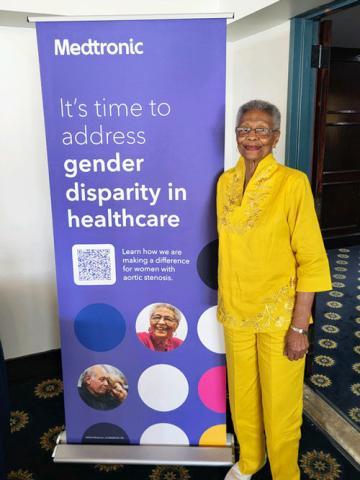 (NewsUSA)
(NewsUSA) - All her life, Darian Tymes has been a high-energy woman with a positive spirit and a can-do attitude. When she started losing her breath and feeling fatigued simply moving from room to room, 80-year-old Darian and her children knew that something was wrong.
- All her life, Darian Tymes has been a high-energy woman with a positive spirit and a can-do attitude. When she started losing her breath and feeling fatigued simply moving from room to room, 80-year-old Darian and her children knew that something was wrong.
With the support of her daughters, Darian made frequent visits to a local cardiologist to try to find the cause of her breathlessness. Unable to make a full diagnosis, her cardiologist referred her to a specialist, Mustafa Ahmed, M.D.
“When she came into my office the first time, I knew she was in trouble,” said Dr. Ahmed. “You knew something was wrong because she is someone who is normally extraordinary, active and independent, and at that moment I saw her quality of life was being impacted.”
After running tests, Dr. Ahmed was able to diagnose Darian with severe aortic stenosis (SAS), a progressive disease that occurs when the heart’s aortic valve narrows, preventing blood from flowing normally. Symptoms of SAS can include chest pain, rapid heart rhythm, trouble breathing and shortness of breath, lightheadedness, difficulty walking short distances, swollen ankles or feet, and difficulty sleeping or needing to sleep sitting up.
Sometimes, it can be easy to confuse these symptoms with general aging, which makes visits to a cardiologist even more important. It is better to get it checked out and be wrong than to have an undiagnosed and untreated heart condition.
SAS affects women differently than men. Generally, women live longer than men, but once women develop SAS, they suffer higher mortality, even when a man and woman are the same age1. After developing symptoms, and if left untreated, the average patient survival is two years without treatment2. Additionally, studies in the US found Black patients with SAS are less likely to receive life-saving treatment compared to other Americans, putting someone like Darian at greater risk3.
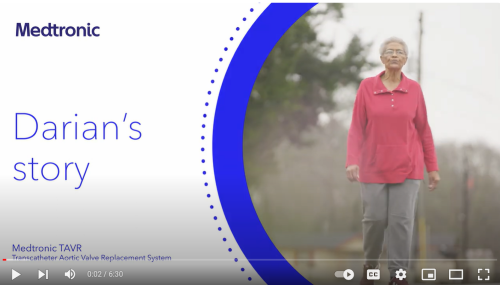
After receiving a diagnosis, Darian and her family knew they needed to take action. While Darian was relieved to finally have an answer to her health concerns, she was understandably nervous about what treatment would entail. Years prior, Darian underwent open-heart surgery, an experience that took a toll on her body and she did not want to endure again. Luckily, Darian was told by her doctor that this kind of major surgery was no longer the norm, and she was an ideal candidate for a minimally invasive alternative.
“I asked them, ‘Are they going to cut my chest open again?’ They said, ‘No. It’s a simple, minimally invasive procedure.’ After they told me how they were going to do it I said, ‘Okay I’m ready.’”
Darian received a transcatheter valve replacement (TAVR) procedure. TAVR is a minimally invasive procedure to replace a diseased aortic valve with a new, artificial valve. Instead of traditional open-heart surgery, TAVR uses a thin, flexible tube called a catheter. The doctor guides the catheter to a patient’s heart through blood vessels which can be accessed through the groin, thigh, stomach, chest, neck, or collarbone. The new valve, which is folded inside the catheter, is then placed securely within the existing valve. With no need for surgery, TAVR means a shorter recovery time and less discomfort, helping patients get back to everyday life more quickly. Because women’s hearts tend to have smaller valves when compared to men, TAVR is a very important treatment option for women.
Darian underwent this procedure with the tested and proven effective EvolutTM TAVR System from Medtronic to treat her aortic stenosis.
A recent study called the SMART Trial, published in the New England Journal of Medicine, compared the system to other valves on the market and found that the new Evolut valve worked very well and demonstrated excellent patient outcomes, especially in women4. These new insights are helping women and their doctors make the decision on what treatment option works best for them.
“Before the procedure, I was not nervous. I was not scared, I was completely relaxed.”
After taking action and undergoing her TAVR procedure, Darian is able to relax once again - if she wants to! No longer feeling shortness of breath and dizziness from walking from room to room, Darian is up and moving, living life the way she always has lived it. “I can walk, I can cook, I can dance, drive…I can do it all myself and I love it. Now at 83 years old, after raising five children, six grandchildren, and working hard, I am entitled to enjoy the rest of my life.”
Seeing Darian back on her feet and on the move has been a joy to her family, and they say that now they even have a hard time keeping up with her.
For more information on aortic stenosis, visit: MyInteractiveASJourney.com
Any forward-looking statements are subject to risks and uncertainties such as those described in Medtronic's periodic reports on file with the Securities and Exchange Commission. Actual results may differ materially from anticipated results.
1Am Heart Assoc. 2021;10:e018816. DOI: 10.1161/JAHA.120.018816,
2 Lester SJ, Heilbron B, Gin K, Dodek A, Jue J. The natural history and rate of progression of aortic stenosis. Chest. April 1998;113(4):1109-1114
3Alkhouli, M et al. J Am Coll Cardiol Inntv. 2019 May. 12 (10) 936-948
4SMART Trial

 Debido a una nueva ley, más personas califican para ahorrar más en medicamentos recetados con el programa Ayuda Adicional de Medicare, por lo que podría valer la pena solicitarlo incluso si cree que no califica o si se le negó antes. Muchas personas califican para Ayuda Adicional y no lo saben.
Debido a una nueva ley, más personas califican para ahorrar más en medicamentos recetados con el programa Ayuda Adicional de Medicare, por lo que podría valer la pena solicitarlo incluso si cree que no califica o si se le negó antes. Muchas personas califican para Ayuda Adicional y no lo saben.



 Due to a new law, more people qualify for more prescription drug savings with Medicare’s Extra Help program, so it could pay to apply even if you don’t think you qualify or if you were denied before. Many people qualify for Extra Help and don’t know it.
Due to a new law, more people qualify for more prescription drug savings with Medicare’s Extra Help program, so it could pay to apply even if you don’t think you qualify or if you were denied before. Many people qualify for Extra Help and don’t know it. 

 - Recently, there has been a lot of discussion by politicians about how to address prescription drug prices and out-of-pocket costs for Americans. Unfortunately, some of that discussion has wrongfully pointed the finger at pharmacy benefit companies (PBMs).
- Recently, there has been a lot of discussion by politicians about how to address prescription drug prices and out-of-pocket costs for Americans. Unfortunately, some of that discussion has wrongfully pointed the finger at pharmacy benefit companies (PBMs).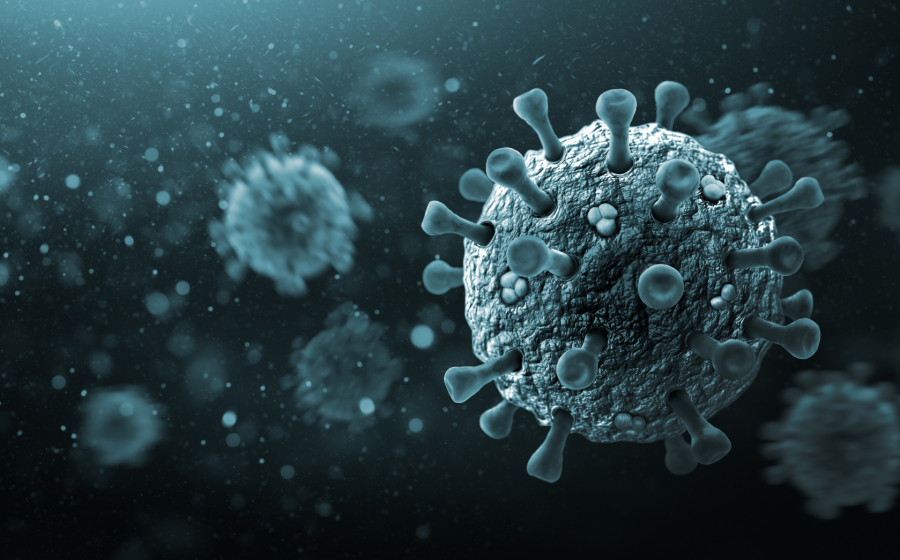

 - The viruses that cause COVID-19 and flu continuously change or “mutate” to escape our natural immune responses and the protection provided by vaccines. As a result, for both flu and COVID-19, vaccination is not a “one and done” proposition.
- The viruses that cause COVID-19 and flu continuously change or “mutate” to escape our natural immune responses and the protection provided by vaccines. As a result, for both flu and COVID-19, vaccination is not a “one and done” proposition. 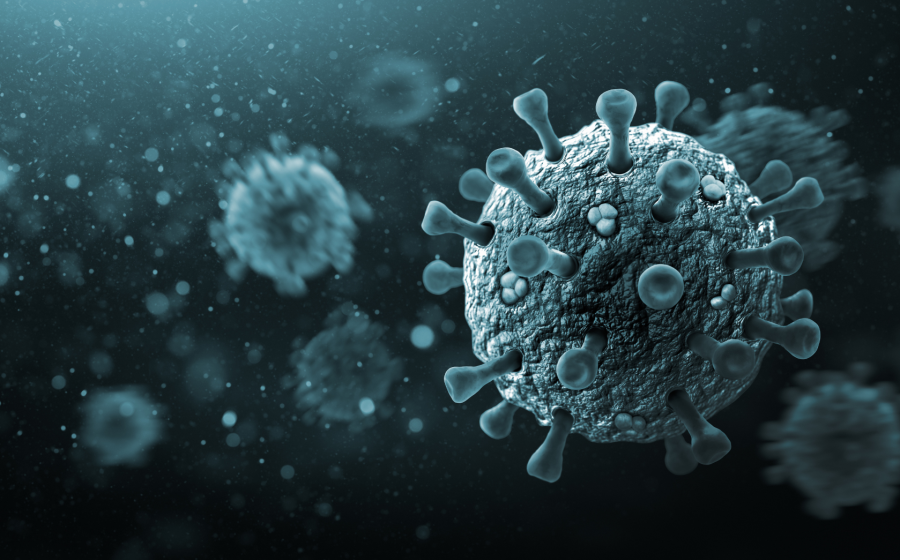

 - Los virus que causan el COVID-19 y la gripe cambian continuamente o "mutan" para escapar de nuestras respuestas inmunitarias naturales y de la protección proporcionada por las vacunas. Como resultado, tanto para la gripe como para el COVID-19, la vacunación no es una proposición de "una sola vez".
- Los virus que causan el COVID-19 y la gripe cambian continuamente o "mutan" para escapar de nuestras respuestas inmunitarias naturales y de la protección proporcionada por las vacunas. Como resultado, tanto para la gripe como para el COVID-19, la vacunación no es una proposición de "una sola vez".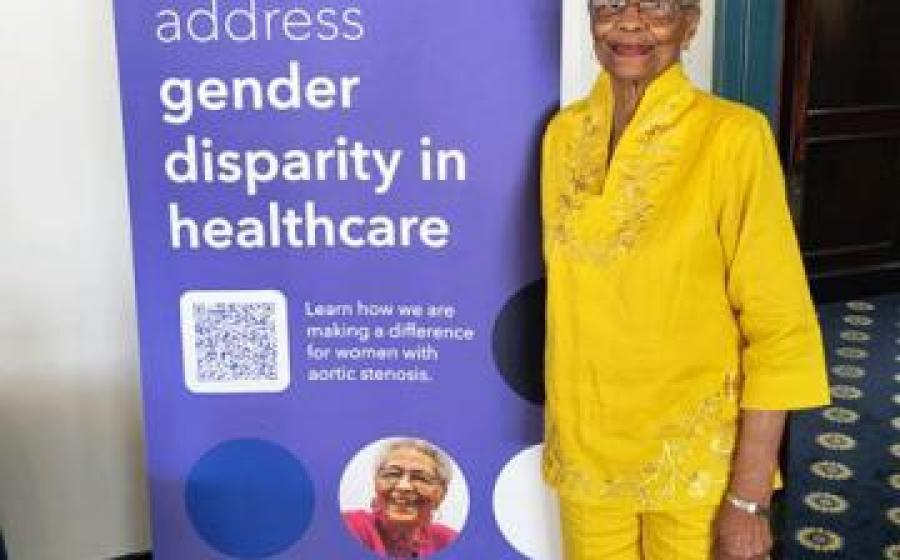

 - All her life, Darian Tymes has been a high-energy woman with a positive spirit and a can-do attitude. When she started losing her breath and feeling fatigued simply moving from room to room, 80-year-old Darian and her children knew that something was wrong.
- All her life, Darian Tymes has been a high-energy woman with a positive spirit and a can-do attitude. When she started losing her breath and feeling fatigued simply moving from room to room, 80-year-old Darian and her children knew that something was wrong.
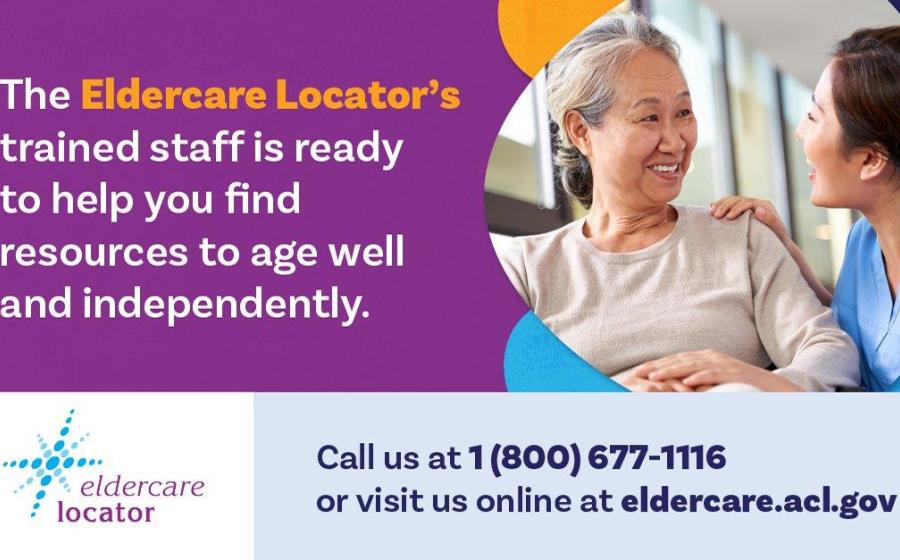
 - The
- The 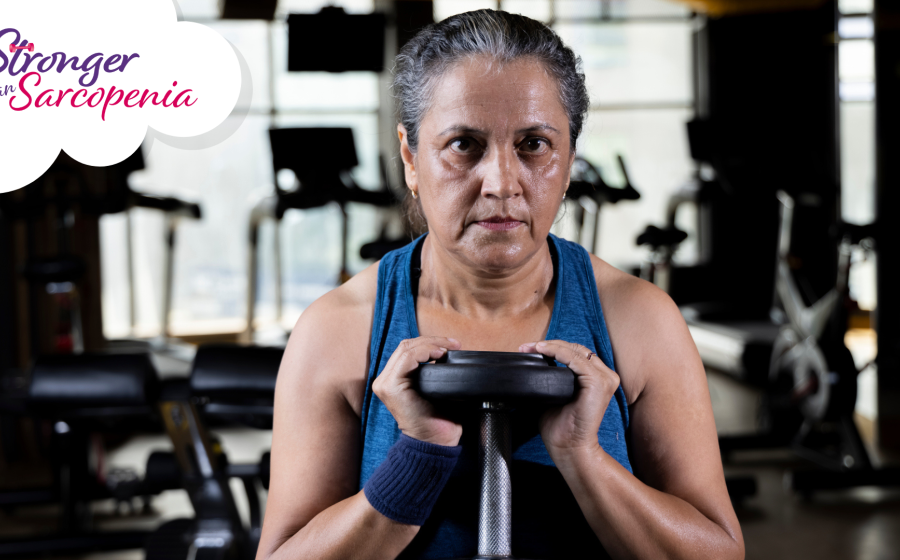
 - Muscle health is just as important as bone health over the lifespan. When a decrease in muscle mass leads to a reduced quality of life and an inability to perform everyday tasks, it could be sarcopenia—the loss of muscle and strength that can happen when someone gets older and does less physical activity. Sarcopenia is particularly concerning among women because the peak muscle mass and strength they achieve in their mid-thirties tend to be lower than for men. This means that when women start losing muscle, they feel the effects sooner than men.
- Muscle health is just as important as bone health over the lifespan. When a decrease in muscle mass leads to a reduced quality of life and an inability to perform everyday tasks, it could be sarcopenia—the loss of muscle and strength that can happen when someone gets older and does less physical activity. Sarcopenia is particularly concerning among women because the peak muscle mass and strength they achieve in their mid-thirties tend to be lower than for men. This means that when women start losing muscle, they feel the effects sooner than men.
 - When faced with a life-threatening heart condition, the right medical device and treatment plan can mean the difference between life and death. Heart disease is the leading cause of death for men, women and people of most racial and ethnic groups in the United States. Despite this, only
- When faced with a life-threatening heart condition, the right medical device and treatment plan can mean the difference between life and death. Heart disease is the leading cause of death for men, women and people of most racial and ethnic groups in the United States. Despite this, only 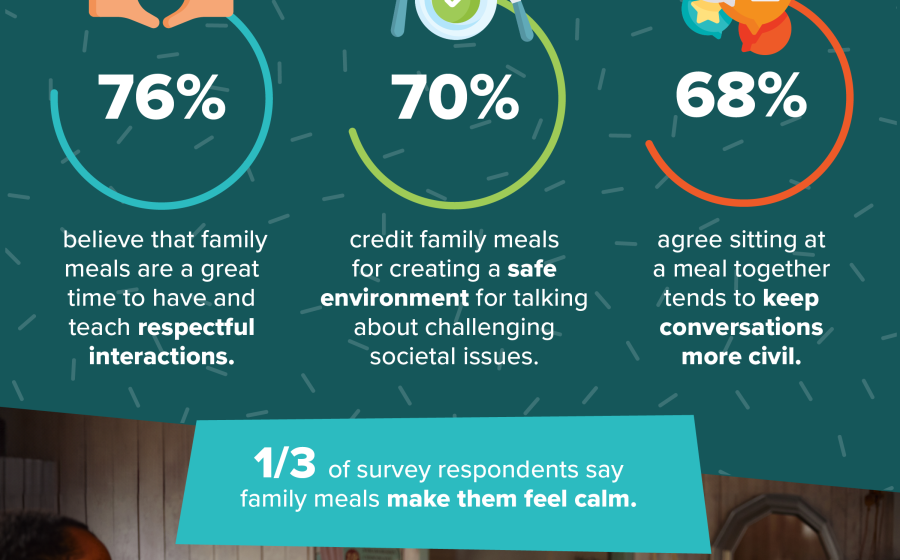
 - Sharing a meal -- with family members that include relatives but also those you choose to call family -- not only promotes healthy eating, but healthier minds as well, new data show.
- Sharing a meal -- with family members that include relatives but also those you choose to call family -- not only promotes healthy eating, but healthier minds as well, new data show.


